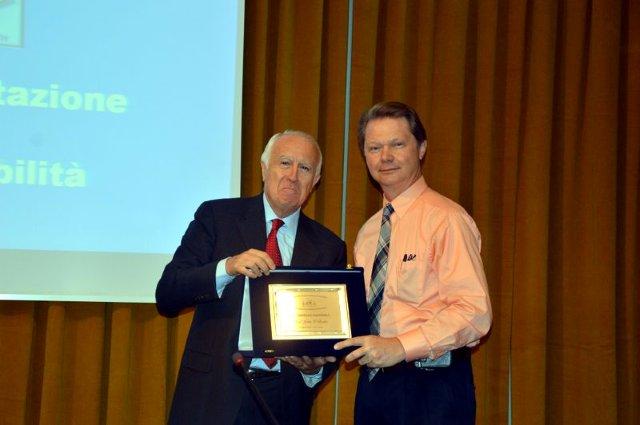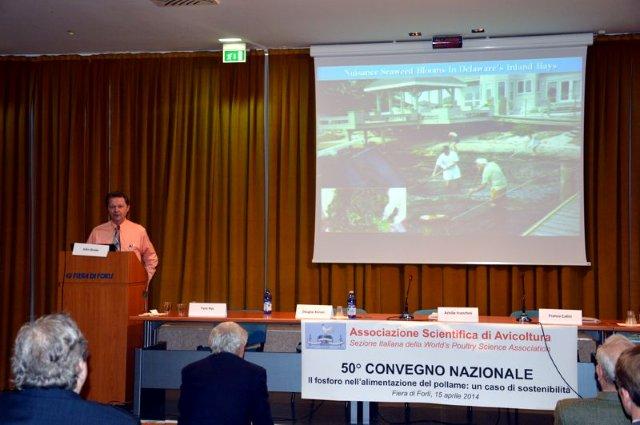Effects of broiler breeder phosphorus nutrition on breeders and broiler progeny
JOHN T. BRAKE, Ph.D., PAS*
Prestage Department of Poultry Science, North Carolina State University, Raleigh, NC 27695-7608 USA

One cannot discuss phosphorus (P) in broiler breeder diets without discussing calcium and phytase given the intimate linkage that has developed among these dietary components while poultry nutritionists have strived to improve environmental sustainability and keep feed costs low. Further, an optimum dietary level of P has not universally been agreed upon given that information obtained from AgriStats indicated that the average available phosphorous (AvP) level in the commercial USA breeding diet has recently been 0.37% with a range from 0.27% to 0.43%. Presumably, the lower level was facilitated by phytase addition. Unlike the commercial laying hen where low AvP diets have been managed successfully for many years as a means to improve egg shell quality and reduce breakage, broiler breeders must produce quality broiler chicks that do not exhibit live performance problems. This additional factor has complicated the development of optimum diets in broiler breeders. In fact, there has been relatively little research that investigated the vertical effects of P nutrition in broilers and their parents.
We then reared broiler breeders on four dietary rearing treatments from 10-21 wk of age and applied four dietary laying treatments from 22-64 wk of age with treatment identity maintained from rearing to laying. Breeder pullets received 0.45% AvP, 0.35% AvP plus phytase (+0.1% AvP), 0.35% AvP, and 0.25% AvP (+0.1% AvP) to 21 wk of age. From 22 wk of age breeder males and females received 0.45% AvP, 0.35% AvP plus phytase (+0.1% AvP), 0.26% AvP, and 0.16% AvP (+0.1% AvP) to 64 wk of age. A reduction in AvP from 0.40% to 0.22% with phytase had no adverse effect on egg production but evidence emerged in this experiment that only the highest level of AvP without phytase supported maximum fertility. Eggs were collected and incubated at 38 and 54 wk in two broiler experiments with breeder treatment identity maintained. Broiler chicks were reared on a starter diet containing adequate AvP to 14 d of age and 9 d of age in the two experiments, respectively. Thereafter a number of AvP combinations were fed. An interesting vertical effect observed in both broiler experiments was a significant reduction in day-old BW of the broiler progeny when the dietary AvP of the broiler breeder layer diet was reduced below 0.40%. This effect was transient and had disappeared by 21 d of age. However, it was found that feed consumption of broilers from breeders receiving phytase was reduced in an increasing manner as the broilers aged. This resulted in a numerical decrease in BW at 42 d of age. This seemed to mimic earlier effects of reduced BW but the fact that a normal AvP starter diet was fed may have muted the effects.
In two additional studies involving individual cages and a two-thirds slat floor house where all eggs laid for a number of days were analyzed it was confirmed that reduced breeder AvP reduced egg weight and egg shell weight. A reduction in egg number and therefore total egg mass was also observed in the slat floor study. This was as expected as Derick Balnave had demonstrated such effects in commercial layers in Australia some years ago. These were restored by phytase in a dose-related manner in these two experiments. This was interesting in that reduced AvP in commercial layer diets has been routinely used to improve egg shell quality in terms of reduced breakage. This suggested an important difference between meat-type layers and egg-type layers, which may simply be related to breeders having access to litter.
The broiler breeder data suggested that these birds on slat-letter floors can lay perfectly well with no added inorganic P in the breeder laying diet as long as there was some added phytase during hot weather. The hens that did not die during heat stress performed perfectly well in terms of egg production, fertility, and hatchability. This suggested that there was a population of broiler breeders that did have sufficient intestinal phytase to obtain their daily P requirements from a corn-soy diet. This population can be estimated to be about 60-70% of the flock. This was consistent with the knowledge that broilers can be selected over a period of years to have a lower AvP requirement.
There was some “vertical” effect of phytase from parent to progeny demonstrated that although small, was real as evidenced by the fact that the effect repeated although manifested somewhat differently depending upon experiment. It seems to the present author that the probable cause for this effect was that some alteration of metabolic function in the broilers has been caused by the use of phytase in the breeder hen under the conditions of this study. This was probably modified by incubation conditions that affected yolk utilization. Personal observations suggested that when incubation was optimum that no effects of the breeder diet on hatchability and broiler chicks was apparent but less than optimum incubation could elicit some perturbations.
Our research confirmed that the dietary AvP broiler breeders in slat-litter housing can be reduced to approximately 0.22% in the layer diet without significant detrimental effects on broiler breeder egg production or broiler performance provided that the broiler progeny were fed starter diets containing adequate levels of dietary AvP without phytase. A greater AvP safety margin would be advisable during the breeder rearing period.

Download the presentation in PDF Format
References
BERRY, W. D., HESS, J. B., LIEN, R. J., AND ROLAND, D. A. (2003) Egg production, fertility, and hatchability of breeder hens receiving dietary phytase. Journal of Applied Poultry Research 12: 264-270.
EDWARDS, H. M., JR. (1993). Dietary 1,25-dihydroxycholecalciferol supplementation increases natural phytate phosphorus utilization in chickens. Journal of Nutrition 123: 567-577.
EKMAY, R. D., SALAS, C., ENGLAND, J., CERRATE, S., AND COON, C. N. (2012) The effects of pullet body weight, dietary nonphytate phosphorus intake, and breeder feeding regimen on production performance, chick quality, and bone remodeling in broiler breeders. Poultry Science 91: 948-964.
HARMS, R. H., AMMERMAN, C. B., AND WALDROUP, P. W. (1964) The effects of supplemental phosphorus in the breeder diet upon hatchability of eggs and bone composition of chicks. Poultry Science 43: 209-212.
MAENZ, D. D., AND CLASSEN, H. L. (1998) Phytase activity in the small intestinal brush border membrane of the chicken. Poultry Science 77: 557-563.
MOORE, R. J., AND VEUM, T. L. (1983) Adaptive increase in phytate digestibility by phosphorus-deprived rats and the relationship of intestinal phytase and alkaline phosphatase to phytate utilization. British Journal of Nutrition 49: 145-152.
SHIM, M. Y., PESTI, G. M., BAKALLI, R. I., AND EDWARDS, H. M., JR. (2008) The effect of breeder age and egg storage time on phosphorus utilization by broiler progeny fed a phosphorus deficiency diet with 1α-OH Vitamin D3. Poultry Science 87: 1138-1145.
TRIYUWANT, A., LETERRIER, C., AND NYS, Y. (1992) Dietary phosphorus and food allowance of dwarf breeders affect reproductive performance of hens and bone development of their progeny. British Poultry Science 33: 363-379.
VAN TUIJL, O. A. (1998). Field observations and practical implications resulting from reductions in the phosphorus content of breeder and broiler diets. World’s Poultry Science Journal 54: 359-363.
WILSON, H. R., MILLER, E. R., HARMS, R. H., AND DAMRON, B. L. (1980) Hatchability of chicken eggs as affected by dietary phosphorus and calcium. Poultry Science 59: 1284-1289.











